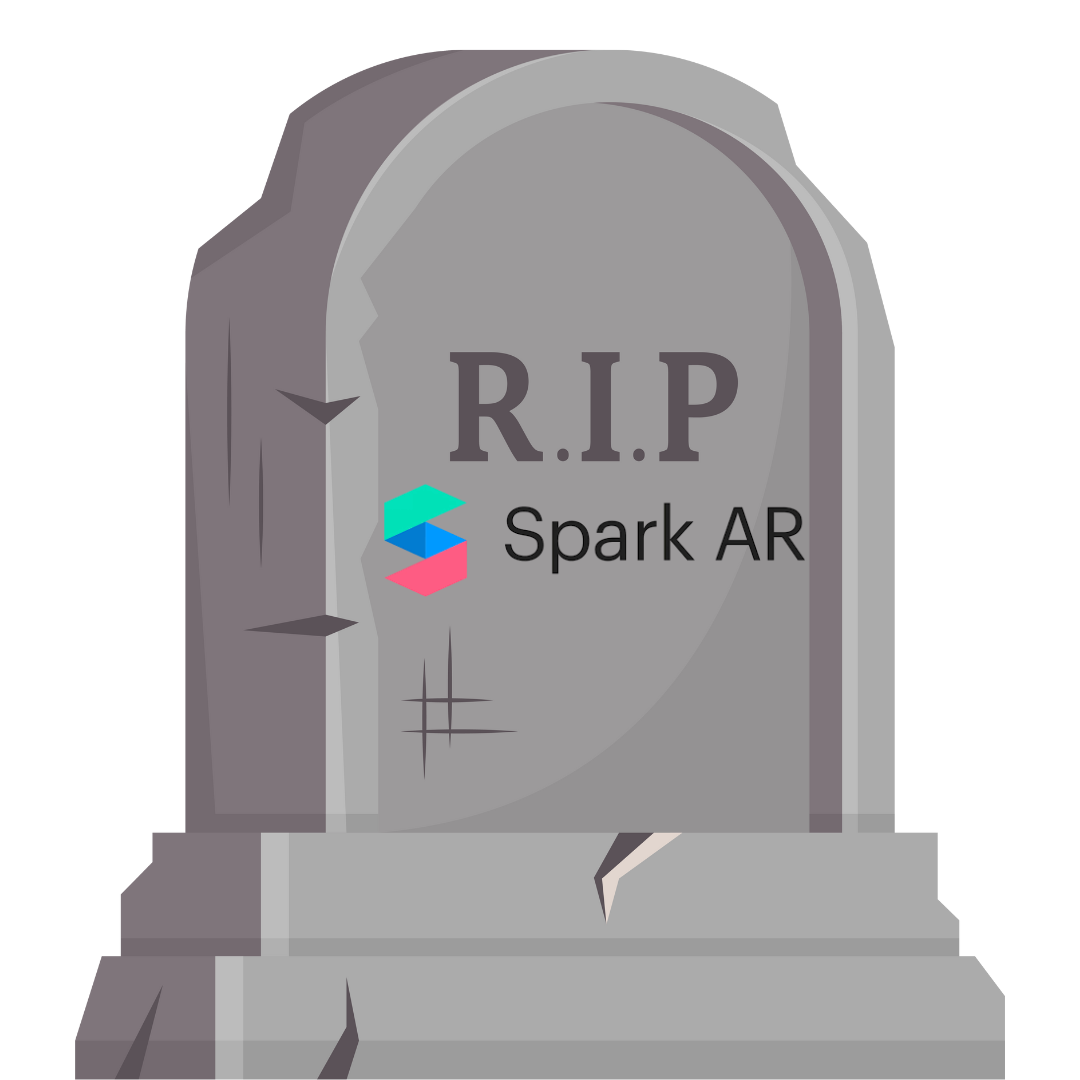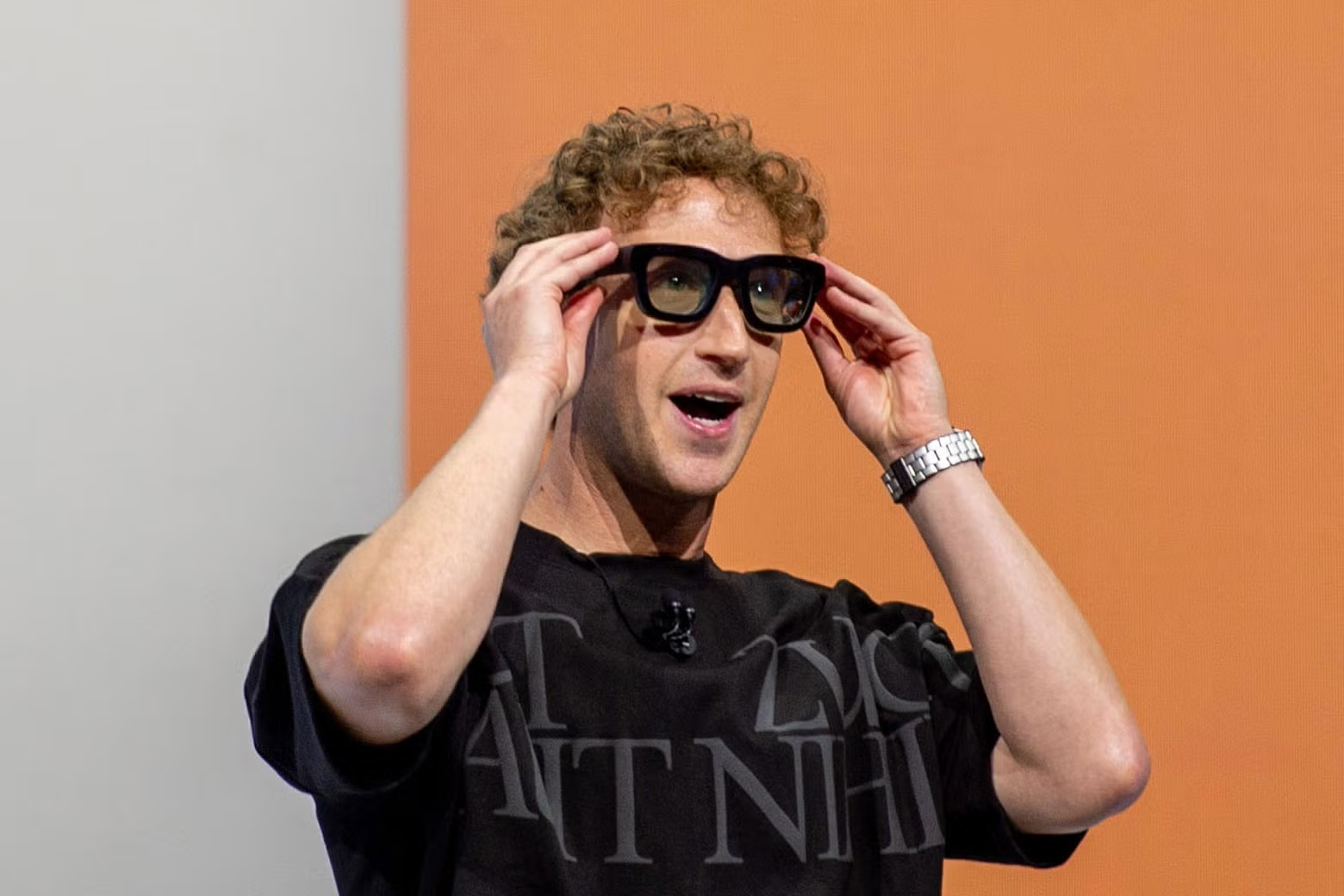Why Did Meta Shut Down Spark AR?

In a surprise move, Meta announced the shutdown of its popular Meta Spark AR platform, effective January 14, 2025. This decision has left creators and businesses questioning the future of augmented reality (AR) on mobile devices, particularly for Instagram and Facebook, where AR filters have become a prominent feature.
Meta’s move signifies a strategic pivot away from AR on mobile, raising concerns among the hundreds of millions of users and creators who have integrated AR into their daily digital interactions. Let's explore why Meta has taken this step, what it means for the AR industry, and how brands can adapt to the shifting landscape.
The Rise and Fall of Meta Spark AR
Meta Spark AR, previously known as SparkAR Studio and Facebook Camera Effects Platform, launched in 2017 and quickly became a hub for creating interactive AR filters on Facebook and Instagram. Users accessed these filters billions of times, particularly on mobile devices. However, despite the platform's popularity, Meta has decided to phase it out, pivoting to focus efforts on a new AR platform that’s powerful enough to create AR experiences for high-end AR glasses like Meta’s Orion, recently introduced as Meta’s first true AR glasses.
While Meta's official statement explains the decision as part of a larger strategy to prioritize products that best serve the future needs of its consumers and business customers, it leaves many questioning whether this is a simple case of cost-cutting or a more profound shift in Meta's vision for AR.

The Quest for XR: Meta’s Shift Toward Headsets
Meta’s recent focus has increasingly shifted toward extended reality (XR), specifically headsets like the Meta Quest 3 and the Ray-Ban Meta Smart Glasses. This pivot aligns with CEO Mark Zuckerberg’s long-term vision for the Metaverse, which aims to move users from interacting with AR on flat screens to immersive, embodied experiences within XR environments.
Meta Spark AR, primarily designed for mobile, no longer aligns with Meta’s roadmap for immersive experiences powered by devices like Quest 3. The company seems intent on consolidating its resources into platforms that can serve as bridges into the Metaverse, which focuses more on headsets than smartphones.
Cost-cutting or Strategic Realignment?
Meta’s decision can also be viewed through the lens of cost-cutting. While the company didn’t directly cite financial reasons for shuttering Spark AR, the move fits into a broader pattern of streamlining its operations, particularly following its costly investments in the Metaverse and virtual reality. The market is seeing Meta adjust its spending to refocus on areas it sees as more profitable and promising for future growth.
Maintaining a mobile-based AR creation platform may no longer fit Meta’s vision, which aims for a more integrated ecosystem with its XR hardware.
Mobile AR: A Missed Opportunity?
The decision to move away from mobile AR feels like a missed opportunity, especially considering the sheer volume of smartphone users interacting with AR. As of 2023, over 3 billion AR-capable smartphones were in circulation, and platforms like Snapchat and TikTok have proven that AR remains highly relevant and engaging for mobile users.
Brands that have leveraged Meta Spark AR for marketing are now left scrambling to find alternative platforms for their AR experiences. The shutdown could create a vacuum in the mobile AR market, offering new opportunities for platforms like BrandXR, 8th Wall, and TikTok to capitalize on.
Alternative AR Platforms for Brands
If you’re a brand or a creator affected by Meta Spark AR’s impending shutdown, there are other robust AR platforms available. These include:
- BrandXR Studio: A no-code AR platform that allows businesses to create, publish, and measure immersive experiences without technical expertise. BrandXR supports AR experiences across multiple platforms, offering flexibility and ease of use for creators.
- 8th Wall: Known for its WebAR capabilities, 8th Wall allows for creating AR experiences directly accessible from a web browser, making it an ideal alternative for brands looking to bypass app stores entirely.
- Snap AR: Snapchat's AR platform continues to thrive, offering extensive tools for creators and brands to develop and distribute AR content to a global audience.
- Unity and WebAR: Unity remains a robust option for brands looking to develop custom mobile AR apps, while WebAR is growing as a solution to bring AR experiences directly to users without requiring an app download.
What Brands Should Do Now
If your brand has been using Instagram or Facebook filters for marketing, now is the time to start planning for the January 2025 transition. There’s no need to abandon AR entirely, but you will need to migrate your AR experiences to new platforms to continue engaging your audience.
Consider the following steps:
- Assess Your Current AR Campaigns: Identify which AR filters and effects are still driving engagement and start planning their migration to alternative platforms like BrandXR or Snap AR.
- Consult with AR Experts: Work with AR specialists who can guide you through the transition and help you optimize your AR strategy for new platforms.
- Stay Informed About XR Developments: Keep an eye on Meta’s evolving XR ecosystem, especially as more users adopt devices like the Meta Quest 3. If your audience starts to shift toward XR hardware, it may be worth investing in immersive AR experiences for these platforms.
Conclusion: The Future of AR is Still Bright
Meta’s decision to shut down Spark AR may signal the end of an era for mobile AR on Instagram and Facebook, but the future of AR remains promising. With alternative platforms stepping in to fill the gap, brands still have the opportunity to leverage AR for marketing, engagement, and storytelling.
As Meta continues to bet on XR and the Metaverse, the AR landscape will evolve—but it will remain a powerful tool for creating unforgettable digital experiences.
TALK TO A PRO
We're here to bring your brand to life!
Stay Connected with BrandXR
Create Augmented Reality for Free!
Create, Publish, and Measure 3D Augmented Reality Experiences Without Having to Code.














